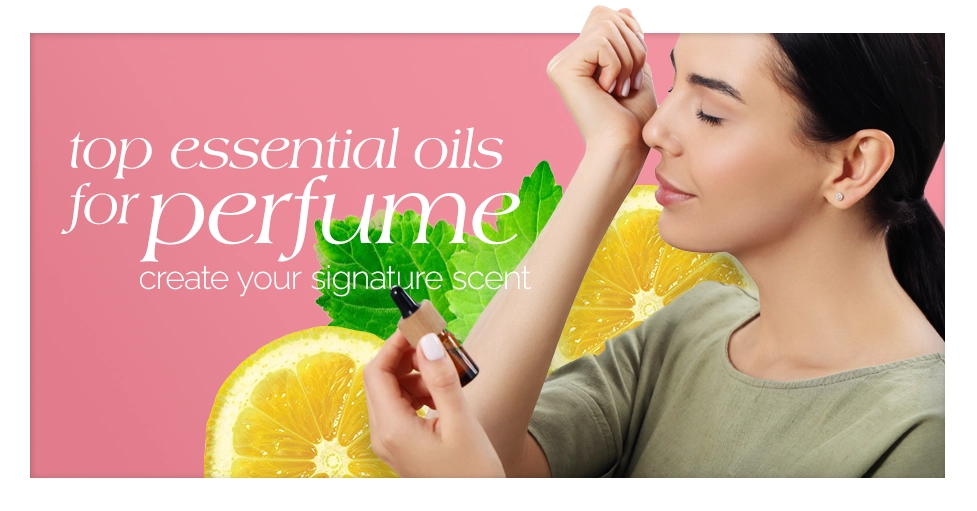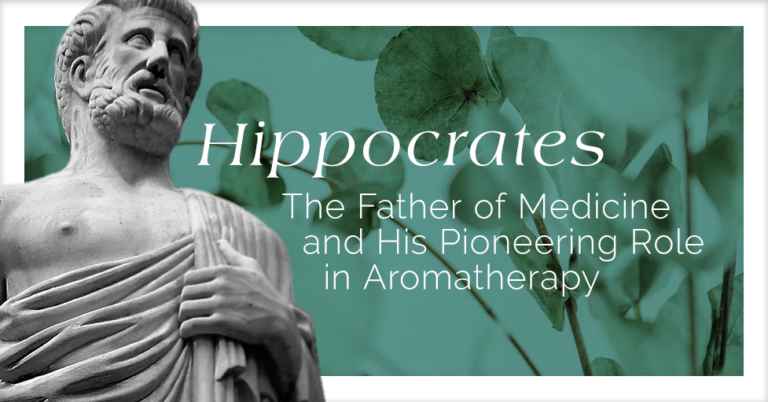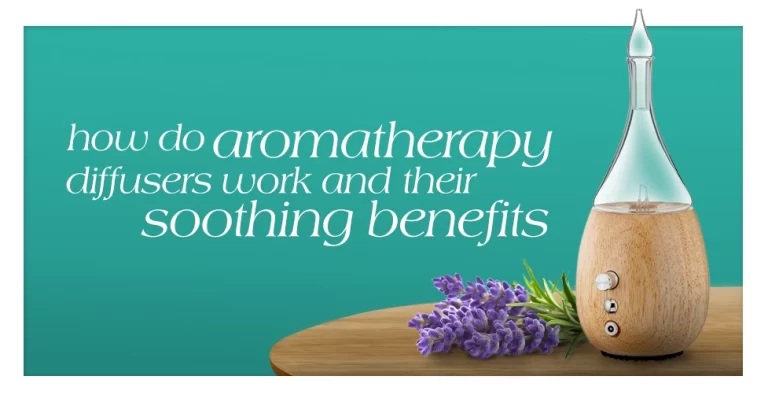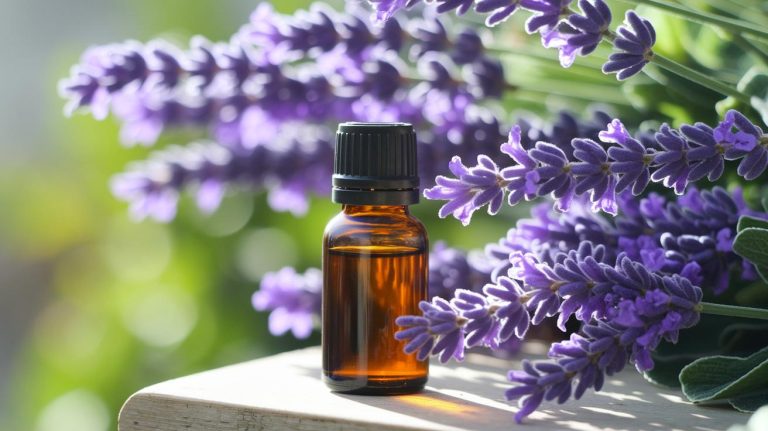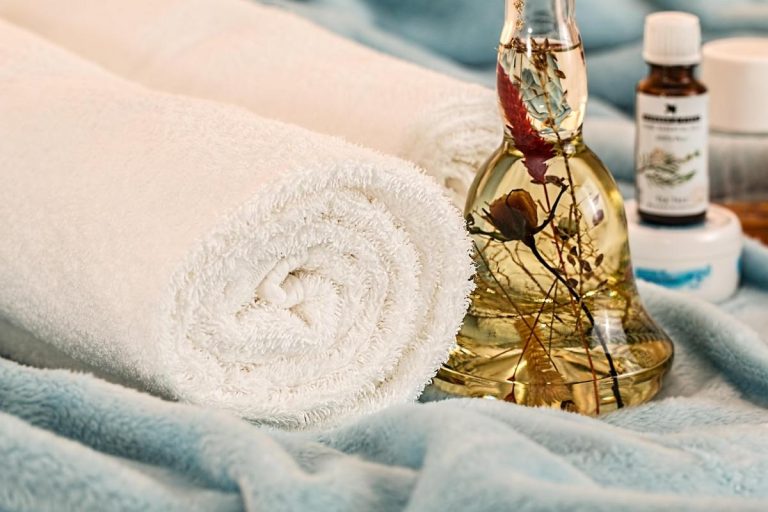Top Essential Oils for Perfume: Create Your Signature Scent
Imagine stepping into a world where every scent is a reflection of your unique personality and mood. With increasing awareness of health and environmental concerns, more people are choosing natural perfumes over synthetic ones. Ready to join them and make your own natural perfume? Essential oils for perfume offer unique, lasting scents without synthetic chemicals. This guide covers the best oils, blending tips, and how to create your personal fragrance.
Important Points to Remember
- Essential oils are a healthier and eco-friendly alternative to synthetic fragrances, offering multiple benefits like therapeutic properties and cost-effectiveness due to their high concentration.
- Understanding the categories of essential oil scents—floral, citrus, woodsy, and earthy—is crucial for creating custom blends and perfumes tailored to different moods and preferences.
- Proper blending techniques, safety considerations, and storage methods are essential to ensure the effective and safe use of essential oils in creating personalized perfumes.
Essential Oils for Perfume: Crafting Your Signature Scent
The allure of using essential oils for making natural perfumes lies in their multifaceted benefits. These oils aren’t just about smelling good; they are composed of aromatic compounds that act as preservatives, offer skin benefits, and impart pleasant aromas. Popular cosmetic companies are increasingly favoring natural fragrances over synthetic ones due to the potential health risks associated with synthetic fragrance chemicals. With essential oils, you can enjoy non-toxic, long-lasting scents that are free from harmful chemicals.
Essential oils are not only healthier but also more cost-effective. Their high concentration means that even a small amount can provide a powerful and enduring fragrance. Steam distillation is a common method used to extract essential oils, preserving their aromatic compounds. This makes them an excellent choice for anyone looking to create a signature scent that lasts. Additionally, the therapeutic properties of essential oils can enhance your overall well-being. Some benefits of essential oils include:
- Lavender and other floral oils can help you relax
- Citrus-based oils can boost your mood
- Peppermint oil can help with headaches and nausea
- Tea tree oil has antibacterial properties and can be used for skincare
- Eucalyptus oil can help with respiratory issues
These are just a few examples of the many benefits and uses of essential oils. They are a versatile choice for personal care and can be customized to suit your individual needs.
Selecting essential oils over synthetic fragrances not only promotes healthier alternatives but also supports environmentally friendly and sustainable practices. Essential oils, being biodegradable and pollution-free, are a responsible selection for mindful consumers. This introduction primes us for a comprehensive exploration of the essential oils’ world and their extensive uses in perfumery.
Understanding Essential Oils for Perfume
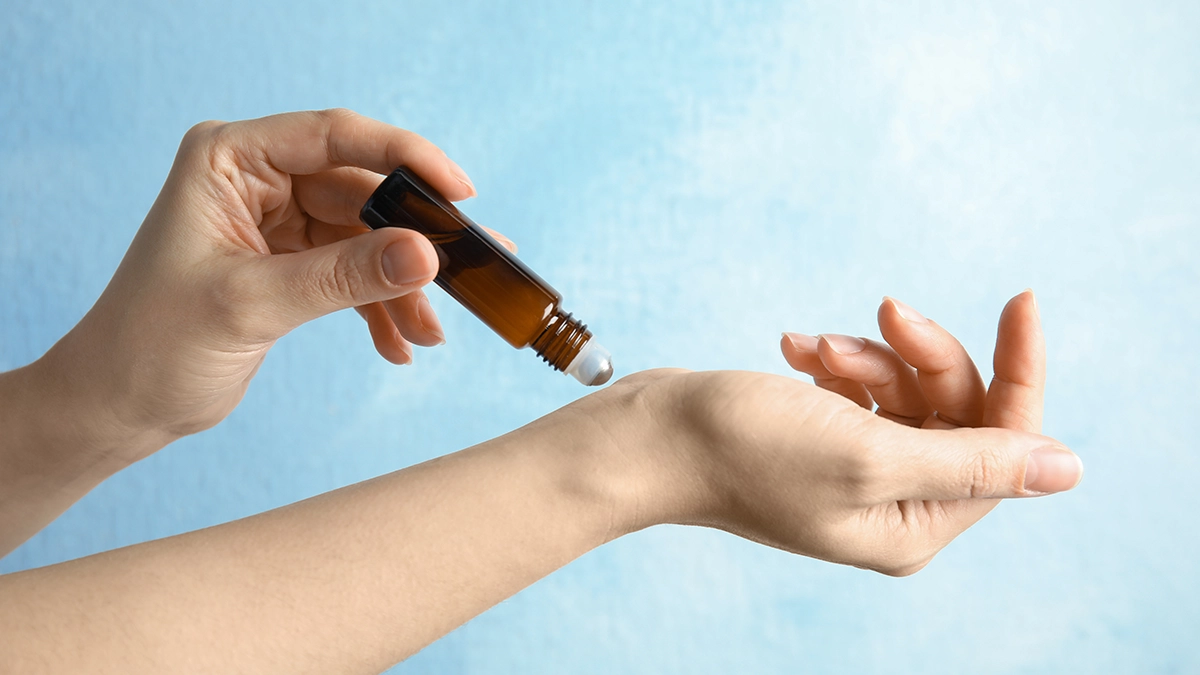
A deep understanding of essential oils and their significance in perfumery is crucial to fully appreciate the art of perfume making. Essential oils, extracted from plants via processes like steam distillation or cold pressing, are intricate mixtures of aromatic compounds. These compounds serve various plant functions such as defense, signaling, and attracting pollinators, and they retain potent fragrances and therapeutic properties.
Natural essential oils offer numerous advantages over synthetic fragrances. They are:
- Non-toxic and free from harmful chemicals, making them a safer choice for personal use
- Eco-friendly and biodegradable
- Sourced from plants grown with sustainable farming practices
Many essential oils are sourced from plants grown with sustainable farming practices. This makes them not only beneficial for your health but also kind to the environment.
Comprehending these fundamental aspects will augment your appreciation for making your own unique fragrances and increase your efficiency in doing so.
The Allure and Advantages of Natural Perfumes: The Fragrant Science
Imagine the pure, enchanting aroma of a blooming garden captured in a bottle. Natural perfumes, crafted from essential oils, not only delight the senses but also offer a healthier and more sustainable alternative to synthetic fragrances. As awareness of health and environmental issues grows, more people are choosing these natural elixirs over chemical counterparts. Here’s why:
Why Choose Essential Oils for Perfume?
- Versatility and Benefits: Essential oils, derived from various plant parts, are celebrated for their purity and therapeutic properties. They offer antimicrobial benefits and skin-soothing effects, making them a preferred choice for natural perfumes2.
- Enhanced Olfactory Value: Blending primary and secondary oils enhances the aromatic complexity of essential oils, resulting in richer and more captivating fragrances3.
Health and Environmental Benefits of Natural Perfumes
- Health Risks of Synthetics: Synthetic fragrances are linked to health issues like asthma, allergies, and migraines. These chemicals can accumulate in our bodies and disrupt hormones4.
- Environmental Impact: Synthetic fragrances pollute both indoor and outdoor air. Persistent chemicals like synthetic musks infiltrate waterways and wildlife5.
- Consumer Preferences: Consumers are increasingly seeking the purity of natural ingredients. Natural ingredient claims boost perceptions and acceptance of perfumes while aligning with environmental stewardship6Apaolaza, V., Hartmann, P., López, C., Barrutia, J., & Echebarria, C., 2014. Natural ingredients claim’s halo effect on hedonic sensory experiences of perfumes. Food Quality and Preference, 36, pp. 81-86.{/efn_note].
Natural perfumes offer a refreshing alternative to synthetic scents. As we become more conscious of our health and the environment, these fragrant jewels promise a future where beauty and sustainability walk hand in hand.
What are Essential Oils?
Essential oils are the lifeblood of aromatic plants, composed of complex mixtures of terpenes and other aromatic compounds. These substances are produced in specialized secretory tissues and serve various functions for the plants, including defense mechanisms and attracting pollinators. The process of extracting these oils is both an art and a science, involving methods like steam distillation and cold pressing to preserve their integrity and potency.
With around 400,000 known plant species that produce essential oils, the diversity of scents and therapeutic benefits is vast. Essential oils have long been used in cosmetic products and perfumery for their pleasant aromas and active ingredients. Some of the most fragrant and popular oils include:
- Jasmine
- Neroli
- Patchouli
- Rose
- Sandalwood
- Ylang ylang
Each offering a unique scent profile that can be used to create your own perfume, following the guidelines of a well-established, expert international body like the International Fragrance Association.
In perfumery, essential oils are cherished not just for their scents but also for their ability to act as preservatives and active agents, offering additional benefits to the skin. This makes them an integral part of natural perfume making, where they are used to craft fragrances that are both luxurious and beneficial for your overall well-being.
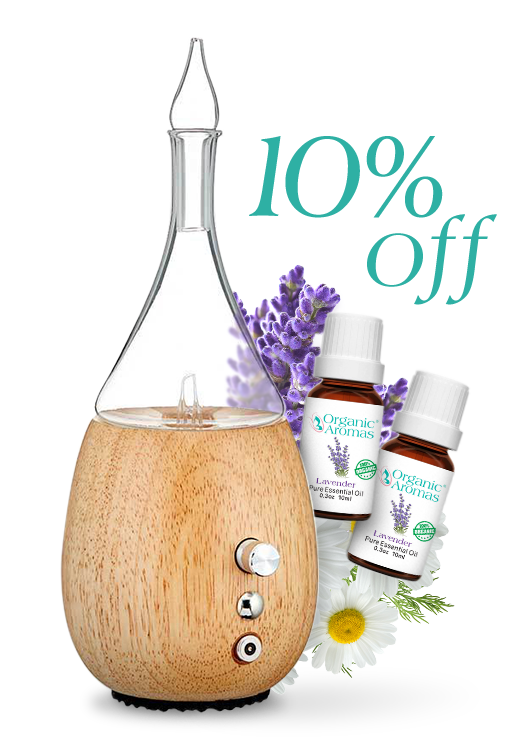
Join Now and Get a Coupon for 10% Off!
Why Choose Natural Essential Oils?
Choosing natural essential oils over synthetic fragrances is a decision rooted in health, sustainability, and overall well-being. One of the primary reasons is that essential oils are non-toxic and free from harmful chemicals. Unlike synthetic perfumes, which can contain ingredients that trigger allergies or skin irritations, natural essential oils offer a safer alternative for personal use.
Moreover, essential oils are praised for their therapeutic properties, providing mood-lifting and calming effects that can enhance your emotional and physical health. The use of natural essential oils ensures that your perfume is not only pleasant to smell but also beneficial for your mental and physical state. Additionally, these oils are biodegradable and do not contribute to environmental pollution, making them an eco-friendly choice.
Sustainability is another significant advantage of natural essential oils. Many producers are committed to sustainable farming practices, ensuring that the plants used are grown and harvested in an environmentally friendly manner. This commitment to sustainability means that by choosing natural essential oils, you are supporting more responsible and ethical production practices. Such choices make a profound difference not just for your health, but for the planet as well.
Categories of Essential Oil Scents
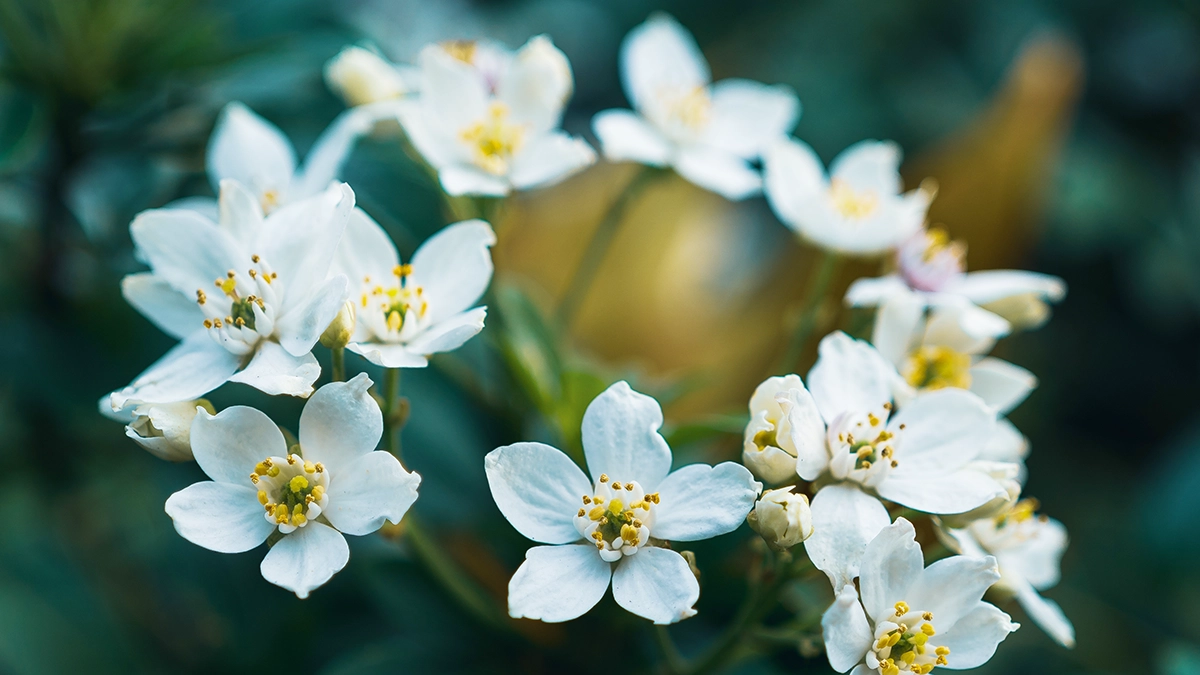
Essential oils can be grouped into several main aroma families, each offering distinct primary aromatic traits and effects. These categories help simplify the process of selecting and blending oils to create your desired scent. The primary scent families include:
- Floral
- Citrus
- Woodsy
- Earthy
Each family has its unique characteristics and benefits, making them suitable for different moods and occasions.
Gaining a clear understanding of these categories is vital for those who want to create their unique signature scent. Be it the sweet and romantic aroma of floral oils, the fresh and invigorating scent of citrus oils, or the deep and grounding fragrances of woodsy and earthy oils, there’s an essential oil to cater to every preference. This section delves into each category, shedding light on their distinct characteristics and popular oils.
Floral Scents
Floral essential oils are renowned for their sweet, romantic, and calming aromas. Some popular floral essential oils include:
- Jasmine: known for its heady floral scent that evokes feelings of romance and tranquility
- Rose: celebrated for its sweet and floral aroma that can uplift the spirit and soothe the mind
- Ylang ylang: intensely sweet and floral aroma that can uplift the spirit and soothe the mind
These floral essential oils can be a great addition to your aromatherapy collection, especially when considering the benefits of three essential oils.
Neroli, derived from the blossoms of the bitter orange tree, offers a sweet, honeyed fragrance that is both refreshing and calming. Geranium, although distilled from leaves, is commonly categorized as a floral oil due to its scent profile, which is sweet and slightly rosy. Magnolia essential oil, with its sweet and floral fragrance, is another excellent choice for those seeking a romantic and poetic aroma.
Floral essential oils are perfect for creating perfumes that are not only fragrant but also emotionally uplifting. Their sweet-smelling and romantic aromas make them a favorite in the world of natural perfumery, offering a touch of elegance and sophistication to any blend. Whether you are crafting a perfume for a special occasion or daily wear, floral oils bring a timeless charm to your creations.
Citrus Scents
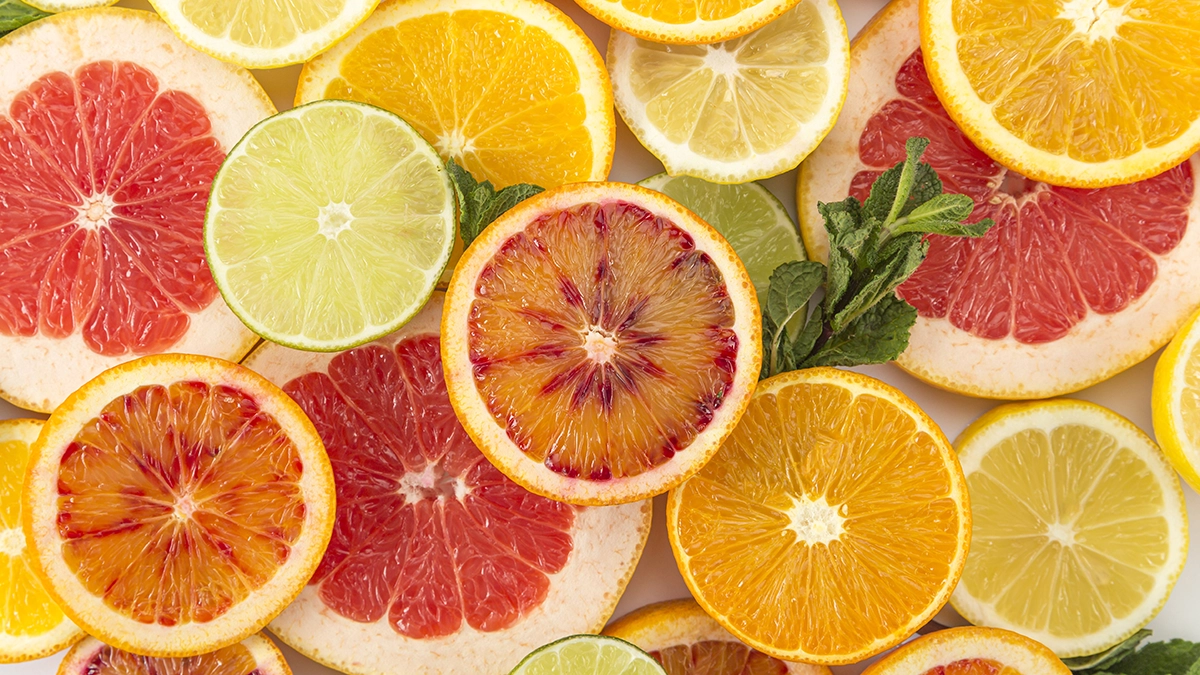
Citrus essential oils are known for their uplifting and invigorating properties. Sweet orange essential oil, for example, offers a bright, fruity scent that is both refreshing and mood-boosting. Bergamot, with its floral and slightly spicy citrus aroma, is known for its soothing yet stimulating properties, making it a versatile choice for various perfume blends. Lime essential oil has a sharp, zesty fragrance that can instantly uplift your spirits and energize your mind. Its sweet, citrusy aroma is perfect for enhancing creativity and bringing a sense of joy to your day. Lemon essential oil, with its sharp, fresh, and clean aroma, acts as a powerful mood booster and air purifier.
These citrus oils are not only invigorating but also versatile, blending well with other essential oils to create refreshing and balanced scents.
The invigorating properties of citrus essential oils make them an excellent choice for perfumes intended to boost energy and lift the mood. Their fresh and fruity scents are perfect for daytime wear, providing a burst of freshness and vitality. Whether you are looking to start your day with a boost or refresh your senses in the afternoon, citrus essential oils offer the perfect solution.
Woodsy and Earthy Scents
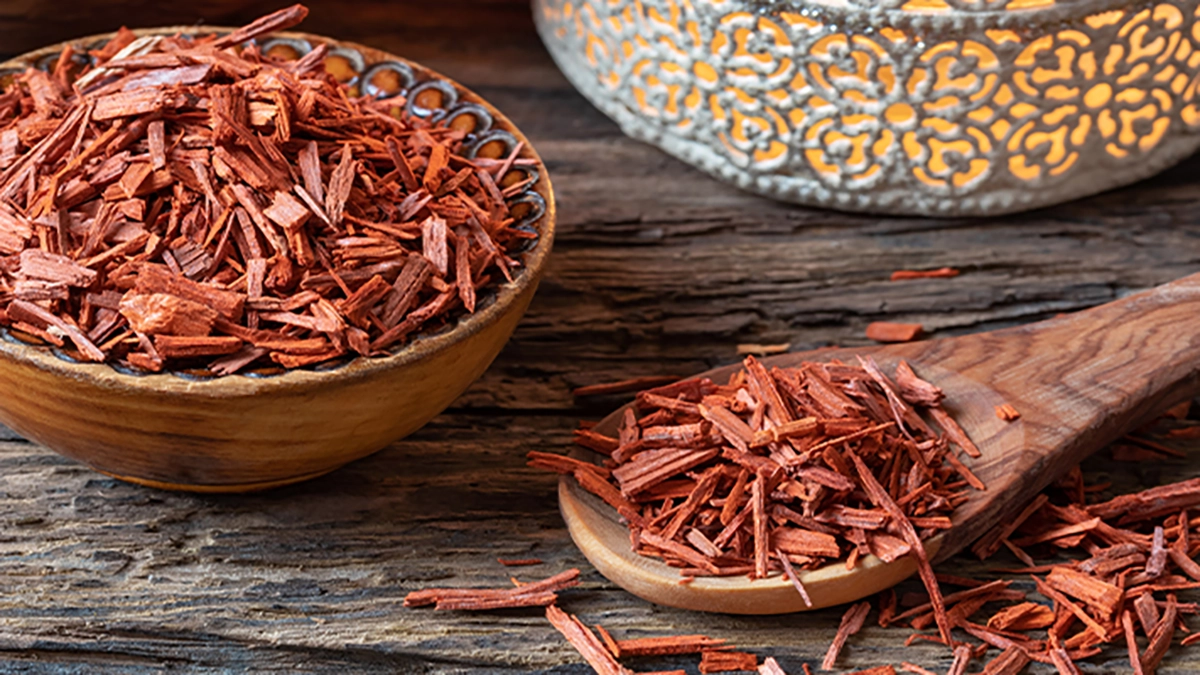
Woodsy and earthy essential oils are celebrated for their deep, warm, and grounding aromas. Cedarwood essential oil, with its warm, balsamic, and woody aroma, is known for its grounding and calming effects. Vetiver essential oil, characterized by its deep, earthy, and smoky scent, is another popular choice for grounding blends. It evokes the scent of a forest floor, bringing a sense of peace and stability.
Sandalwood essential oil offers a rich, sweet, and woody fragrance that is both luxurious and grounding. It is highly valued in perfumery for its long-lasting scent and ability to blend well with other essential oils. Patchouli essential oil, with its sweet, musky aroma, adds depth and complexity to any blend, providing a balanced and sophisticated fragrance. These oils are perfect for creating perfumes that offer a sense of calm and balance, making them ideal for evening wear or times of relaxation.
The grounding and calming effects of woodsy and earthy essential oils make them a staple in natural perfumery. Their deep and lingering scents provide a sense of stability and peace, making them perfect for creating perfumes that are both soothing and sophisticated. Whether you are looking to unwind after a long day or create a tranquil atmosphere, these essential oils are the perfect choice:
- Sandalwood
- Cedarwood
- Patchouli
- Vetiver
- Frankincense
- Myrrh
Blending Essential Oils
The art of blending essential oils necessitates a thorough understanding of each oil’s characteristics and their interactions with one another. A harmonious essential oil blend typically follows the ratio of 30% top note, 50% middle note, and 20% base note, ensuring a beautifully evolving fragrance over time. Alternatively, you could consider the blending factors, which take into account each oil’s scent strength.
Crafting your perfume blend opens the door to boundless creativity and personalization. By mixing different essential oils, you can concoct a fragrance that is uniquely yours. Letting the blend rest for a day enables the oils to fully harmonize, yielding a more cohesive scent. This section will navigate you through the process of blending essential oils, helping you to create a balanced and exquisite perfume.

Sign Up to Get Your FREE
e-Book Here…
Top, Middle, and Base Notes
The traditional method of blending essential oils relies on the concept of top, middle, and base notes, each contributing to the overall fragrance profile. Top notes are the first to be noticed and evaporate quickly, providing the initial impression of the perfume. Examples include light and subtle scents like eucalyptus and lemon. These notes typically make up 15-25% of the blend.
Middle notes, also known as heart notes, form the core of the fragrance and emerge once the top notes dissipate. They are usually more robust and lasting, with scents like geranium and lavender being common examples. Middle notes make up 30-40% of the blend, giving the perfume its character and depth.
Base notes are the heaviest and most enduring scents, providing a lasting foundation for the perfume. These notes include:
- Cedarwood
- Patchouli
- Sandalwood
- Vanilla (absolutes are extracted with solvents)
- Musk (this is not an essential oil but widely commercially available)
These scents linger long after the other notes have faded. Base notes typically constitute 45-55% of the blend, ensuring the fragrance remains noticeable for an extended period.
By understanding and applying these principles, you can create a well-balanced and captivating perfume.
Using Carrier Oils
Carrier oils are essential in diluting essential oils to ensure they are safe for skin application. These oils help carry the essential oil blend onto the skin, preventing irritation and sensitization. Jojoba and grapeseed oil are among the most recommended carrier oils for making perfumes, as they are lightweight and have a neutral scent that doesn’t interfere with the essential oils.
Other excellent carrier oils include sweet almond oil, which provides a smooth and nourishing base for your perfume. Using a carrier oil not only makes the essential oils safe to use but also enhances the longevity of the fragrance. By choosing the right carrier oil, you can ensure your natural perfume is both effective and gentle on the skin.
Tips for Successful Blending
Creating a successful essential oil blend starts with small quantities and gradually adjusting to perfect the balance of the mixture. Begin with about 10 drops of essential oils in total, adhering to the recommended ratios to prevent sensitization or irritation. Testing blends on paper strips or cotton balls before applying them to the skin can help you evaluate how the scent develops over time.
Wafting the essential oil bottles under your nose before blending allows you to test if you like a particular fragrance combination. Once you are satisfied with the blend, shake your perfume and let it rest for about a month to allow the scents to meld and become stronger. Always shake your perfume before applying it to ensure the scents mix within the bottle.
Certain oils like clove can quickly overpower a blend, so it is crucial to add them slowly and use a pipette if necessary. By following these tips, you can create a well-balanced and harmonious essential oil blend that is uniquely yours.
Methods for Making Essential Oil Perfumes
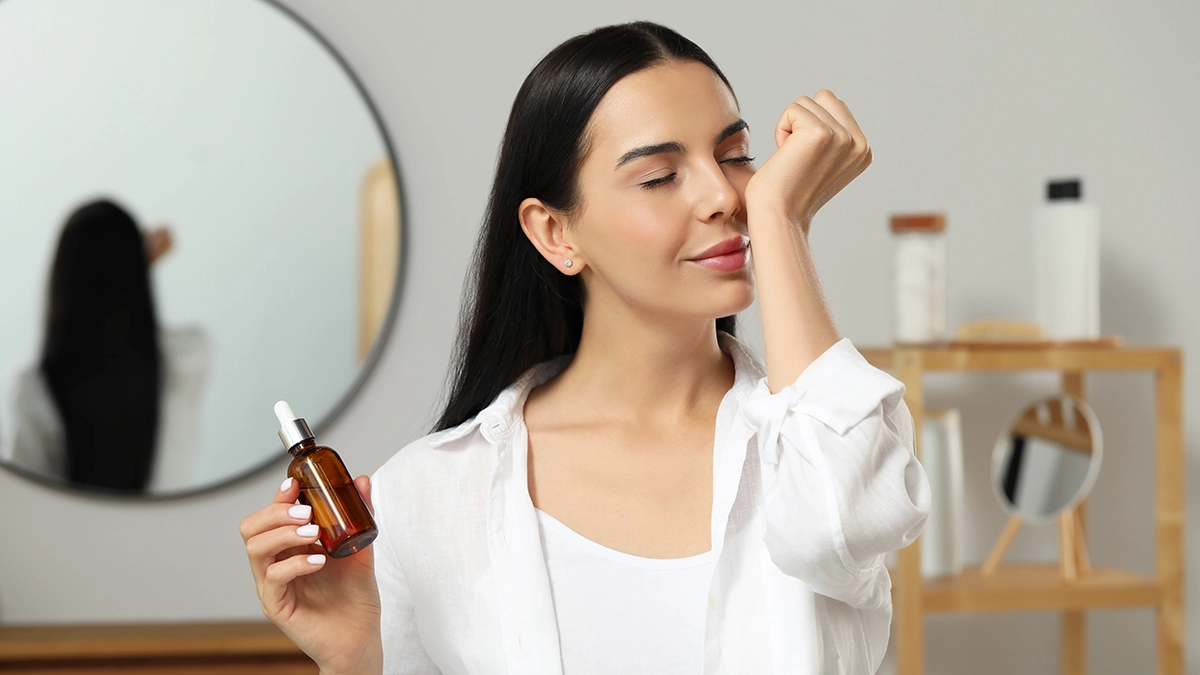
Various methods exist for creating essential oil perfumes, each with its unique benefits and applications. The principal methods are roll-on perfumes, solid perfumes, and perfume sprays. Each technique requires specific ingredients and methods, enabling you to opt for the one that aligns best with your preferences and lifestyle.
The process of creating your own essential oil perfume can be gratifying and pleasurable. Regardless of whether you prefer the convenience of a roll-on bottle, the tactile experience of a solid perfume, or the refreshing mist of a perfume spray, each method offers a delightful way to relish the natural aromas of essential oils and perfume oil.
Roll-On Perfume
Roll-on perfumes are a convenient and portable way to enjoy your favorite essential oil blends. To create a roll-on perfume, you will need a roll-on bottle, carrier oil, and your chosen essential oils. Start by filling the bottle with a carrier oil like jojoba or grapeseed oil, then add your essential oil blend following the recommended ratios.
Roll-on perfumes are:
- Easy to apply
- Perfect for on-the-go touch-ups
- Fit neatly in a purse or pocket
- Allow for precise application to your pulse points, such as the wrists and neck
This method is ideal for those who want a simple and effective way to carry their signature scent with them wherever they go.
Solid Perfume
Solid perfumes offer a tactile and engaging way to enjoy your essential oil blends. To make a solid perfume, you will need a carrier oil, beeswax, and your chosen essential oils. The recommended ratio for creating solid perfume is two parts oil to one part beeswax. Melt the beeswax and carrier oil together, then stir in the essential oils before the mixture solidifies.
Solid perfumes are not only practical but also luxurious. They can be stored in small tins or containers, making them easy to carry and apply. The combination of beeswax and essential oils creates a balm-like texture that glides smoothly onto the skin, providing a long-lasting fragrance. The pale yellow color of the solid perfume adds a touch of elegance to its appearance.
This method is perfect for those who enjoy making perfume, as it allows them to craft their own unique and personal scents to wear.
Perfume Spray
Creating a perfume spray involves using a base of alcohol and water to dilute the essential oils. To make a perfume spray, follow these steps:
- Add 1 to 4 fl oz of perfumer’s alcohol to a spray bottle.
- Mix in your essential oil blend.
- Shake well to ensure the oils are evenly distributed.
- You can also add a small amount of distilled water to soften the scent and make it more refreshing.
Perfume sprays are ideal for those who prefer a light and airy application of their fragrance. They can be used as a body spray or to freshen up clothing and linens. This method is particularly useful for creating larger batches of perfume that can be stored and used over time. With a perfume spray, you can easily enjoy the benefits of essential oils in a convenient and versatile form.
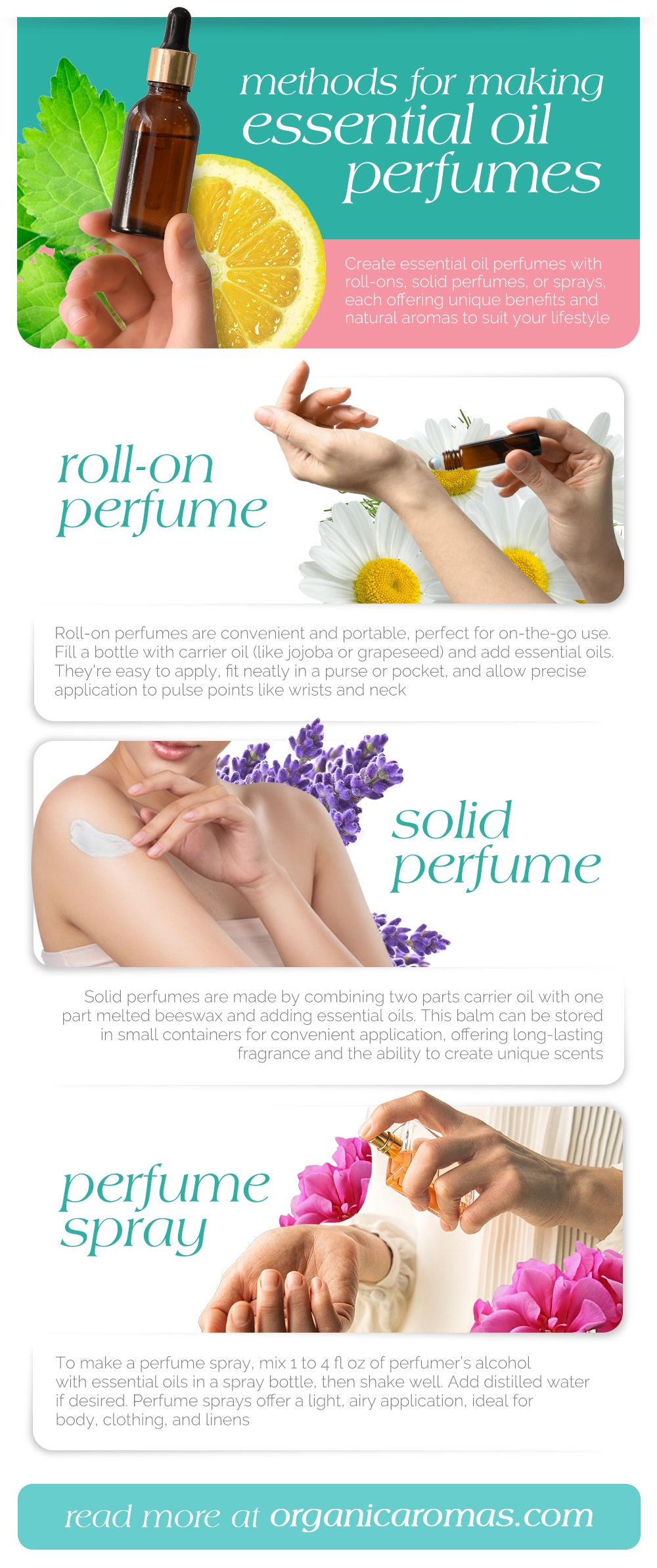
Popular Essential Oil Perfume Recipes
Formulating your own essential oil perfume recipes can be an enjoyable creative endeavor. Here are some tried-and-true recipes to kickstart your journey. These blends comprise a romantic floral blend, a reenergizing citrus blend, and a grounding woodsy blend.
By adhering to these recipes, you can concoct a range of unique and attractive fragrances that cater to various moods and events. Regardless of whether you favor the sweet and captivating aroma of floral oils, the invigorating scent of citrus oils, or the profound and soothing fragrance of woodsy oils, these recipes have something in store for everyone, along with an accurate odor description for each blend.
Romantic Floral Blend
A romantic floral blend creates a feminine and alluring scent that is perfect for special occasions or everyday wear. To make this blend, combine 10 drops of jasmine essential oil, 15 drops of ylang ylang essential oil, and 5 drops of rose essential oil. These oils provide a rich and sweet floral aroma that is both captivating and soothing.
The combination of jasmine, ylang ylang, and rose essential oils results in a fragrance that is deeply romantic and enchanting. This blend is ideal for those who love sweet floral scents and want a perfume that exudes elegance and charm. By following this recipe, you can create a signature scent that is uniquely yours.
Energizing Citrus Blend
The energizing citrus blend is perfect for boosting your mood and energy levels. To create this blend, combine 8 drops of sweet orange essential oil, 7 drops of lemon essential oil, and 5 drops of bergamot essential oil. Adding a few drops of ginger essential oil can add depth and complexity to the blend. These oils offer fresh and uplifting aromas that invigorate the senses and enhance creativity.
Adding a few drops of rose and ginger essential oils can add depth and complexity to the sweet citrus notes, creating a well-rounded and refreshing fragrance. This blend is perfect for daytime wear, providing a burst of freshness and vitality that can help you feel energized and inspired throughout the day.
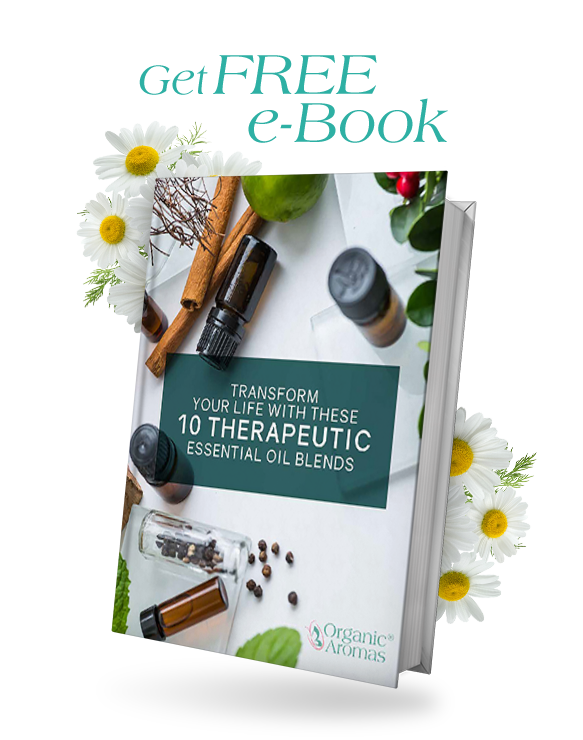
Sign Up to Get Your FREE Essential Oils e-Book Here
Grounding Woodsy Blend
The grounding woodsy blend offers a sophisticated and calming fragrance that is perfect for relaxation and balance. To create this blend, combine 10 drops of cedarwood essential oil, 8 drops of sandalwood essential oil, 5 drops of patchouli essential oil, and a hint of clary sage. These oils provide deep, warm, and earthy aromas that evoke the scent of a forest floor.
The combination of cedarwood, sandalwood, and patchouli essential oils results in a fragrance that is both luxurious and grounding. This blend is ideal for evening wear or times when you need to unwind and find peace. By following this recipe, you can create a signature scent that brings a sense of calm and balance to your day.
Blending Essential Oils with Organic Aromas Lab Kit
Creating your signature scent can be an enjoyable and rewarding experience, especially when using the Organic Aromas Essential Oil Blending Lab Kit. This comprehensive kit provides everything you need to blend and experiment with essential oils, offering a perfect way to develop personalized fragrances at home.
The kit features:
- Glass Graduated Measuring Cylinder: For precise measurements.
- Glass Funnel and Stirring Rod: To mix oils effortlessly.
- Glass Dropper: For accurate drop-by-drop additions.
- Amber Glass Bottles (10ml): Including regular, roller, and spray bottles.
- Labeling Stickers and Orifice Inhibitor Remover: To keep your blends organized.
How to Use the Kit
- Prepare Your Workspace: Ensure a clean, clutter-free area.
- Select Your Oils: Choose a combination of top, middle, and base notes.
- Measure and Mix: Use the measuring cylinder and stirring rod for accuracy.
- Test Your Blends: Use the dropper to create test samples in the small amber bottles.
- Store and Label: Use the roller and spray bottles for final blends, labeling each one with the included stickers.
This kit not only enhances your blending experience but also makes it easy to carry your creations wherever you go. Whether you’re making DIY cleaners, beauty products, or your personal perfume, the Organic Aromas Lab Kit is an essential tool for any aromatherapy enthusiast.
For more information and to purchase the kit, visit Organic Aromas.
Safety Considerations
While essential oils provide numerous benefits, their safe use is paramount. Without the guidance of a trained aromatherapist, essential oils should never be consumed orally since their high concentration can be toxic. Furthermore, they should not be applied undiluted to the skin to prevent irritation and sensitization.
Potential risks include photosensitivity caused by some citrus oils, skin irritation from herbaceous oils, and allergic reactions to certain oils. Always check safety data for the oils you are using and perform a skin patch test before applying them to larger areas of your body. Proper handling and storage are also crucial to ensure the safety and effectiveness of your essential oils.
Skin Sensitivity
Skin sensitivity is a common concern when using essential oils. It is recommended to perform a small patch test before using any new essential oil or product to check for any adverse reactions. Some essential oils can cause skin sensitization if used repeatedly or in high concentrations, so it is important to follow recommended dilution guidelines.
Applying essential oils to pulse points, such as the wrists and neck, can help minimize the risk of skin irritation. Using a carrier oil to dilute the essential oils further reduces the likelihood of adverse reactions and ensures the oils are safe for skin application. By taking these precautions, you can enjoy the benefits of essential oils without compromising your skin’s health.
Allergic Reactions
Allergic reactions to essential oils can occur, making it crucial to handle these substances carefully. Essential oils should not be used undiluted on children under the age of 6 to prevent potential allergic reactions. Understanding the potential allergens in essential oils and using them with caution can help minimize the risk of adverse reactions.
For those with known allergies or sensitivities, it is important to consult with a healthcare provider or a certified aromatherapist before using essential oils. Proper dilution and patch testing can help ensure that the essential oils you use are safe and suitable for your individual needs.
Safe Storage
Proper storage of essential oils is essential to maintain their potency and effectiveness. Essential oils should be stored in dark, amber-colored bottles to protect them from light, which can degrade their quality. Keeping your essential oils in a cool, dark place helps preserve their fragrance and therapeutic properties.
Flammable essential oils should be kept away from sources of ignition to ensure safety. Additionally, essential oils should be stored out of reach of children and pets to prevent accidental ingestion or exposure. By following these storage guidelines, you can ensure that your essential oils remain safe and effective for their intended use.
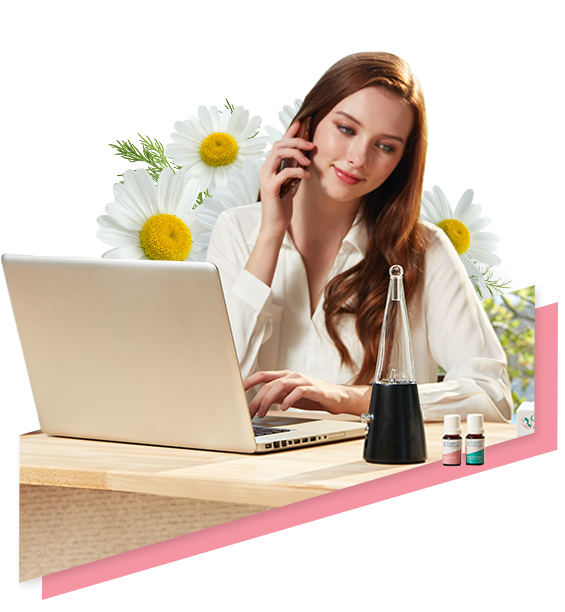
Join Our Exclusive Member Club to get Big Discounts!
Wrapping Up: Crafting Your Signature Scent
Creating your own perfume with essential oils is a rewarding and enjoyable experience. By understanding the nature of essential oils, their benefits, and the techniques for blending them, you can craft unique and personalized fragrances that are both luxurious and beneficial for your well-being. Whether you prefer floral, citrus, or woodsy scents, there is an essential oil blend for every preference and occasion.
The journey of making your own perfume allows you to explore the vast array of natural aromas and discover the perfect combination that suits your style and mood. Embrace the art of perfumery and enjoy the therapeutic benefits of essential oils, knowing that you are choosing a healthier and more sustainable option for your personal care. Create your signature scent and let it be a reflection of your unique personality and taste.
Frequently Asked Questions
What are the benefits of using essential oils in perfumes?
Using essential oils in perfumes provides therapeutic properties, acts as preservatives, and offers long-lasting scents while being free from harmful chemicals, making them a healthier alternative to synthetic perfumes.
How should I blend essential oils for a balanced perfume?
To create a balanced perfume, aim for a blend with 30% top note, 50% middle note, and 20% base note to achieve a harmonious fragrance.
Can I apply essential oils directly to my skin?
No, it is not recommended to apply essential oils directly to your skin. Always dilute them with a carrier oil to avoid irritation.
How do I store my essential oil perfumes?
Store your essential oil perfumes in dark, amber-colored bottles in a cool, dark place to maintain their potency and effectiveness. Keep them away from sources of ignition and out of reach of children and pets.
What are some popular essential oil perfume recipes?
Some popular essential oil perfume recipes include a romantic floral blend, an energizing citrus blend, and a grounding woodsy blend. Try mixing jasmine, ylang ylang, and rose for a romantic scent, or sweet orange, lemon, and bergamot for an energizing aroma. For a more grounded fragrance, consider blending cedarwood, sandalwood, and patchouli.
- .
- Extraction and Formulation: Studies show that essential oils from plants like lavender and rosemary are rich in compounds such as linalool and geraniol, which create enchanting and natural perfumes1Abebe, T., Abebe, A., Tadesse, M., & Mandefro, S., 2021. Extraction and characterization of aromatic essential oils for natural perfume formulation. Berhan International Research Journal of Science and Humanities.
- Rao, B., Kaul, P., Syamasundar, K., & Ramesh, S., 2002. Water soluble fractions of rose-scented geranium (Pelargonium species) essential oil.. Bioresource technology, 84 3, pp. 243-6
- Bridges, B., 2002. Fragrance: emerging health and environmental concerns. Flavour and Fragrance Journal, 17, pp. 361-371
- Klaschka, U., & Kolossa-Gehring, M., 2007. Fragrances in the Environment: Pleasant odours for nature? (9 pp). Environmental Science and Pollution Research, 14, pp. 44-52.

